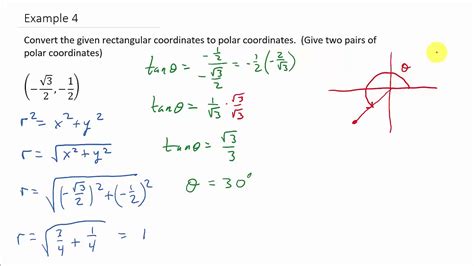How To Convert Coordinates? Polar Calculator Solution

In the realm of mathematical computations, converting coordinates from one system to another is a common task, particularly when dealing with polar and Cartesian (rectangular) coordinates. The conversion between these two systems is fundamental in various fields, including physics, engineering, and computer science, as it allows for the representation of points in a plane using different, yet equivalent, methods. This article delves into the process of converting between polar and Cartesian coordinates, highlighting the formulas and steps involved, and introducing the use of a polar calculator as a practical tool for these conversions.
Understanding Coordinate Systems
Before diving into the conversion process, it’s essential to understand the basics of both polar and Cartesian coordinate systems.
Cartesian Coordinates
The Cartesian coordinate system, also known as the rectangular coordinate system, is a two-dimensional plane where each point is represented by an ordered pair of numbers (x, y). The x-axis and y-axis intersect at a point called the origin (0, 0), and the coordinates (x, y) specify the position of a point relative to the origin.
Polar Coordinates
The polar coordinate system represents points in a plane using a distance from a reference point (the origin) and the angle formed with the positive x-axis (measured in radians and denoted by θ). A point in the polar coordinate system is represented as (r, θ), where r is the radius or distance from the origin to the point, and θ is the angle.
Conversion Formulas
To convert between Cartesian and polar coordinates, the following formulas are used:
From Cartesian to Polar:
- (r = \sqrt{x^2 + y^2})
- (\theta = \tan^{-1}\left(\frac{y}{x}\right))
From Polar to Cartesian:
- (x = r \cdot \cos(\theta))
- (y = r \cdot \sin(\theta))
Steps for Conversion
Cartesian to Polar Conversion
- Calculate the Radius ®: Use the formula (r = \sqrt{x^2 + y^2}) to find the distance of the point from the origin.
- Calculate the Angle (θ): Apply the formula (\theta = \tan^{-1}\left(\frac{y}{x}\right)) to determine the angle. Note that the quadrant of the point (x, y) must be considered to ensure the correct angle.
Polar to Cartesian Conversion
- Calculate x: Use (x = r \cdot \cos(\theta)) to find the x-coordinate.
- Calculate y: Apply (y = r \cdot \sin(\theta)) to find the y-coordinate.
Using a Polar Calculator
A polar calculator is a handy tool for converting between polar and Cartesian coordinates. These calculators, whether online or part of a graphing calculator, simplify the conversion process by directly inputting the known values and obtaining the converted coordinates.
- For Cartesian to Polar Conversion: Input the x and y values into the calculator and select the function for polar conversion. The calculator will display the r and θ values.
- For Polar to Cartesian Conversion: Input the r and θ values, then use the calculator to find the corresponding x and y values.
Practical Applications
Understanding how to convert between polar and Cartesian coordinates has numerous practical applications:
- Physics and Engineering: Often, problems involving circular motion or rotational kinematics are more easily solved using polar coordinates, while Cartesian coordinates might be more intuitive for linear motion.
- Computer Science: In graphics and game development, converting between these coordinate systems is essential for tasks such as rotating objects, performing transformations, and handling user input.
- Navigation: GPS systems use a combination of coordinate systems to pinpoint locations and guide navigation.
Conclusion
Converting between polar and Cartesian coordinates is a fundamental skill that requires understanding the basic principles of both systems and applying the conversion formulas. With the aid of a polar calculator, these conversions can be efficiently performed, making it a valuable tool for students, professionals, and anyone working with coordinate systems. Whether for academic purposes, professional applications, or personal projects, mastering the conversion between polar and Cartesian coordinates opens up a wide range of possibilities in various fields.
Frequently Asked Questions
What is the primary difference between polar and Cartesian coordinates?
+The primary difference lies in how points are represented. Cartesian coordinates use x and y values to represent a point’s position relative to the origin, while polar coordinates use a radius (distance from the origin) and an angle from the positive x-axis.
How do I convert Cartesian coordinates to polar coordinates?
+To convert Cartesian coordinates (x, y) to polar coordinates (r, θ), use the formulas (r = \sqrt{x^2 + y^2}) for the radius and (\theta = \tan^{-1}\left(\frac{y}{x}\right)) for the angle, considering the quadrant of the point.
What are some practical applications of converting between polar and Cartesian coordinates?
+Practical applications include physics and engineering problems, computer science and graphics, and navigation systems. Converting between these coordinate systems allows for more intuitive and efficient problem-solving in various contexts.

